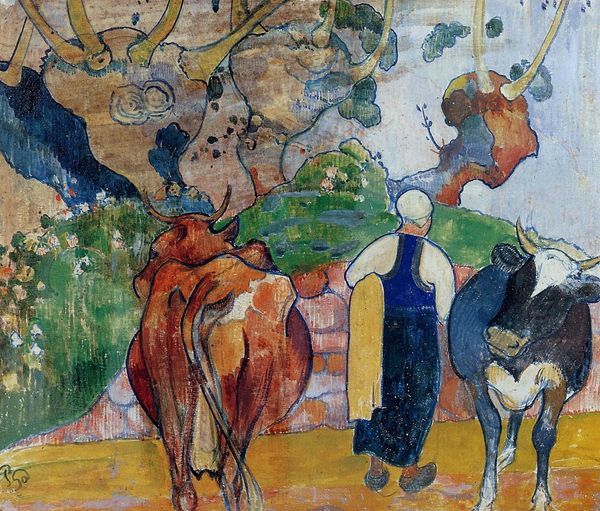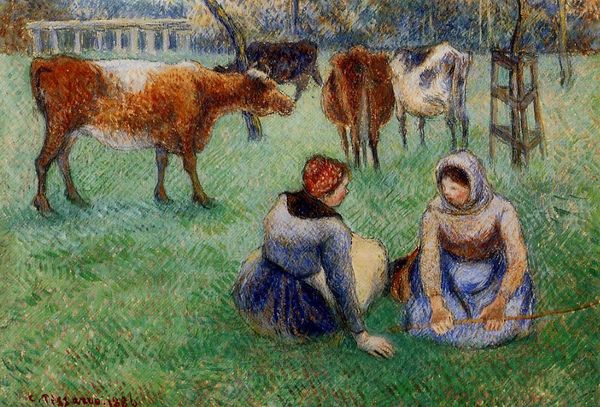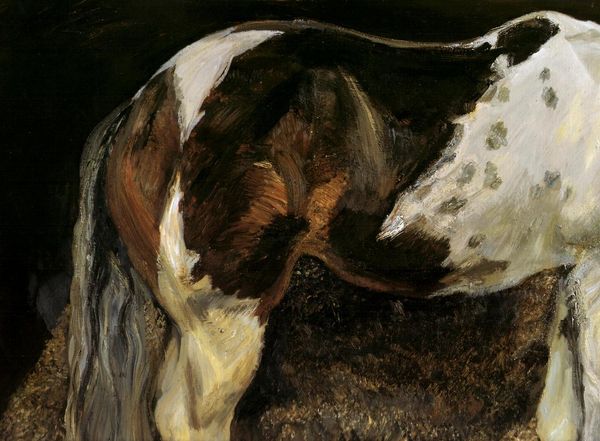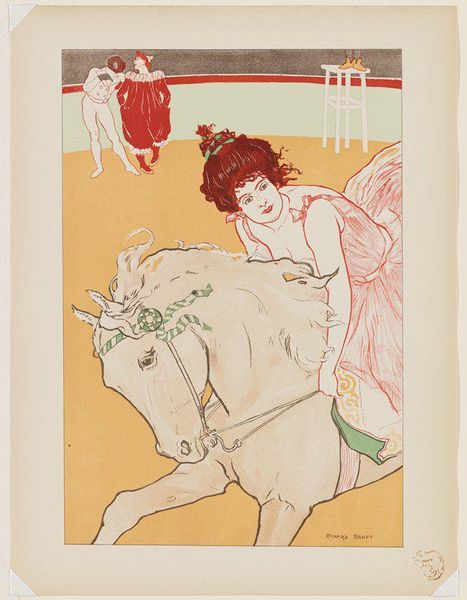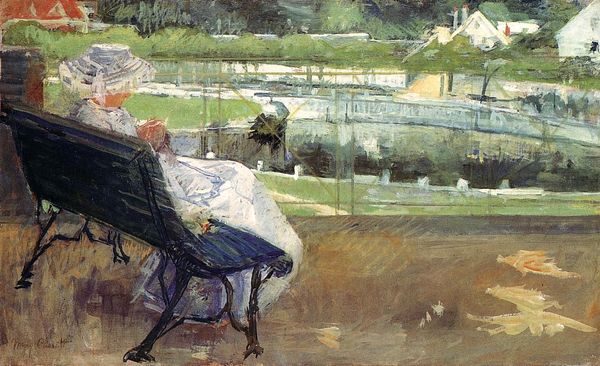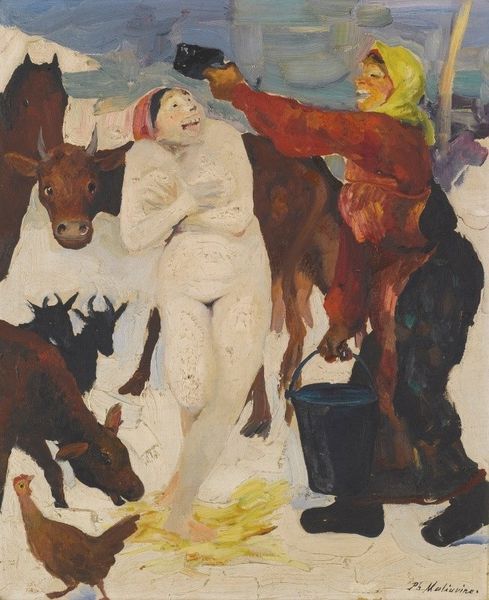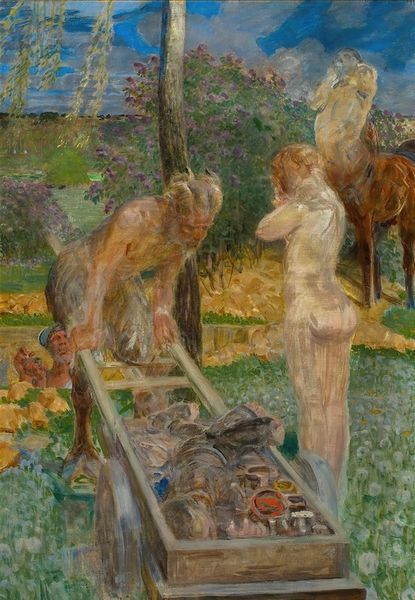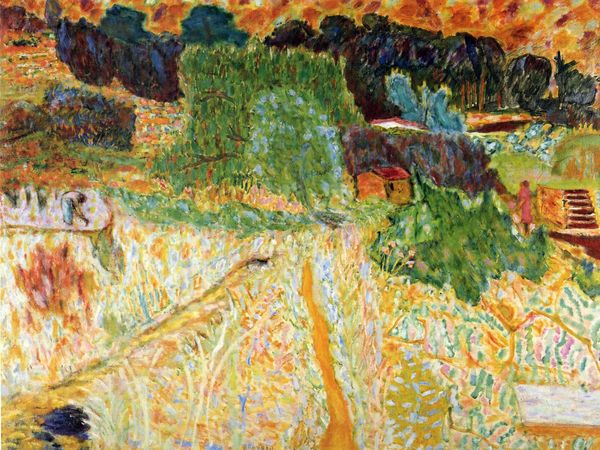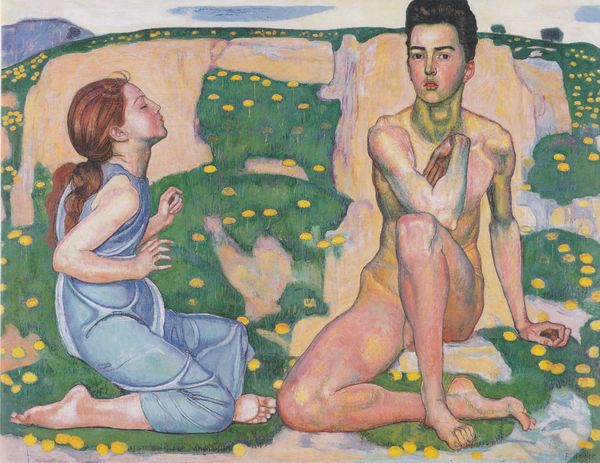
watercolor
#
animal
#
landscape
#
figuration
#
oil painting
#
watercolor
#
genre-painting
#
post-impressionism
#
watercolor
Copyright: Public domain
Editor: Here we have Paul Gauguin's "The Milkmaid" from 1889. It seems to be rendered in watercolor, with a focus on a young woman and her cows in a landscape. It feels very grounded and pastoral, but there's also something a bit unsettling in the figures' expressions. How do you interpret this work? Curator: Gauguin was certainly interested in depicting an idealized version of rural life, yet through a post-impressionist lens we begin to understand that paintings such as this were never solely about face value. Note that the painting’s flatness challenges traditional perspective; do you observe how it pulls us away from the window and instead implicates us directly within it? It calls into question ideas surrounding what it means to authentically portray subjects and also which realities or identities he, as a male colonial subject, chooses to elevate. Editor: So you're suggesting Gauguin's choice of subject and style isn't just aesthetic but also politically charged? Curator: Precisely. These idyllic scenes often masked deeper power dynamics, in addition to Gauguin’s exoticizing the inhabitants of the lands he appropriated for his visual playground. The gaze, the way he portrays women... it's all interwoven with colonial narratives that we, as viewers, are obliged to unpack. Consider his later works from Tahiti in connection to this. What echoes do you see? Editor: I guess the "innocence" I initially saw is more of a constructed narrative, a romanticized idea of labor and country life, created and imposed by the artist himself. It also prompts me to ask who is represented in art and who gets to do the representing? Curator: Yes. It requires us to consistently reflect on how artists, consciously or unconsciously, perpetuate and challenge social structures, and how their visual expressions invite and impose various ways of living in the world.
Comments
No comments
Be the first to comment and join the conversation on the ultimate creative platform.
